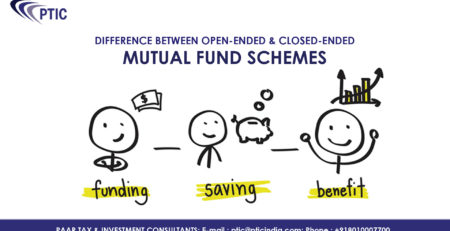If you are looking to make some investments to save tax, then you would have most certainly come across Section 80C of the Income Tax Act. This section offers a tax deduction for investments made in certain financial instruments like Equity Linked Savings Scheme (ELSS), Public Provident Fund (PPF), Tax saving Fixed Deposits (FD), National Pension Scheme (NPS), etc. Each of these investment options has different features but one thing in common – tax benefits. Aligning one or more of these investments with your financial objectives can offer a dual benefit of wealth creation and tax saving.
Equity Linked Savings Scheme (ELSS):
Being a diversified, equity mutual fund, ELSS spreads the corpus across the stock market by investing in companies with varying market capitalization. All investments made in ELSS are subject to a lock-in period of 3 years. Section 80C of the Income Tax Act offers a tax deduction of up to ₹150,000 for investments made in ELSS in a financial year. The income earned is tax-free too and so is the maturity amount.
Public Provident Fund (PPF):
PPF is a tax-free savings and investment scheme by the Government of India offering a fixed rate of interest. The maturity period of these investments is 15 years and an investor has to make a minimum yearly deposit ₹500. The maximum amount of investment in a financial year is ₹150,000 which offers tax deduction under Section 80C. The interest earned and the maturity amount is tax-free too.
What are the pros and cons of investing in ELSS vs PPF:
Risk Involved:
PPF Funds are Government Funds, so PPF investments are very safe. However, ELSS is an Equity Fund, the investments are subject to market risk.
Expected Return:
The Government declares the rate of interest on PPF investments every year. It is usually between 7 and 8% p.a. Being market-linked, the returns can vary depending on the scheme selected but an investor can expect an approximate return of 12-14%.
Tax Benefits:
In both of the funds (ELSS & PPF)the invested amount is exempt from taxes at the time of investment, accumulation, and withdrawal.
Lock-in Period:
In PPF, the investment is locked for a period of 15 years. ELSS investments have a lock-in period of 3 years with no possibility of premature withdrawal.
Time Limit for Investment:
PPF investments cannot be made for more than 15 years. But ELSS investments have no upper time limits.
How much to Invest:
In PPF, you can invest as low as ₹500 to ₹150,000 in a financial year. In ELSS, you can invest as much as you want. However, under Section 80C of the Income Tax Act, only ₹150,000 in a financial year will be allowed for a tax deduction.
From the above, you can see that a PPF investment is a relatively safer option, but offers lower returns and longer time horizon as compared to ELSS. With the tax benefits being the same, ELSS certainly is a better tax-saving alternative to PPF.








